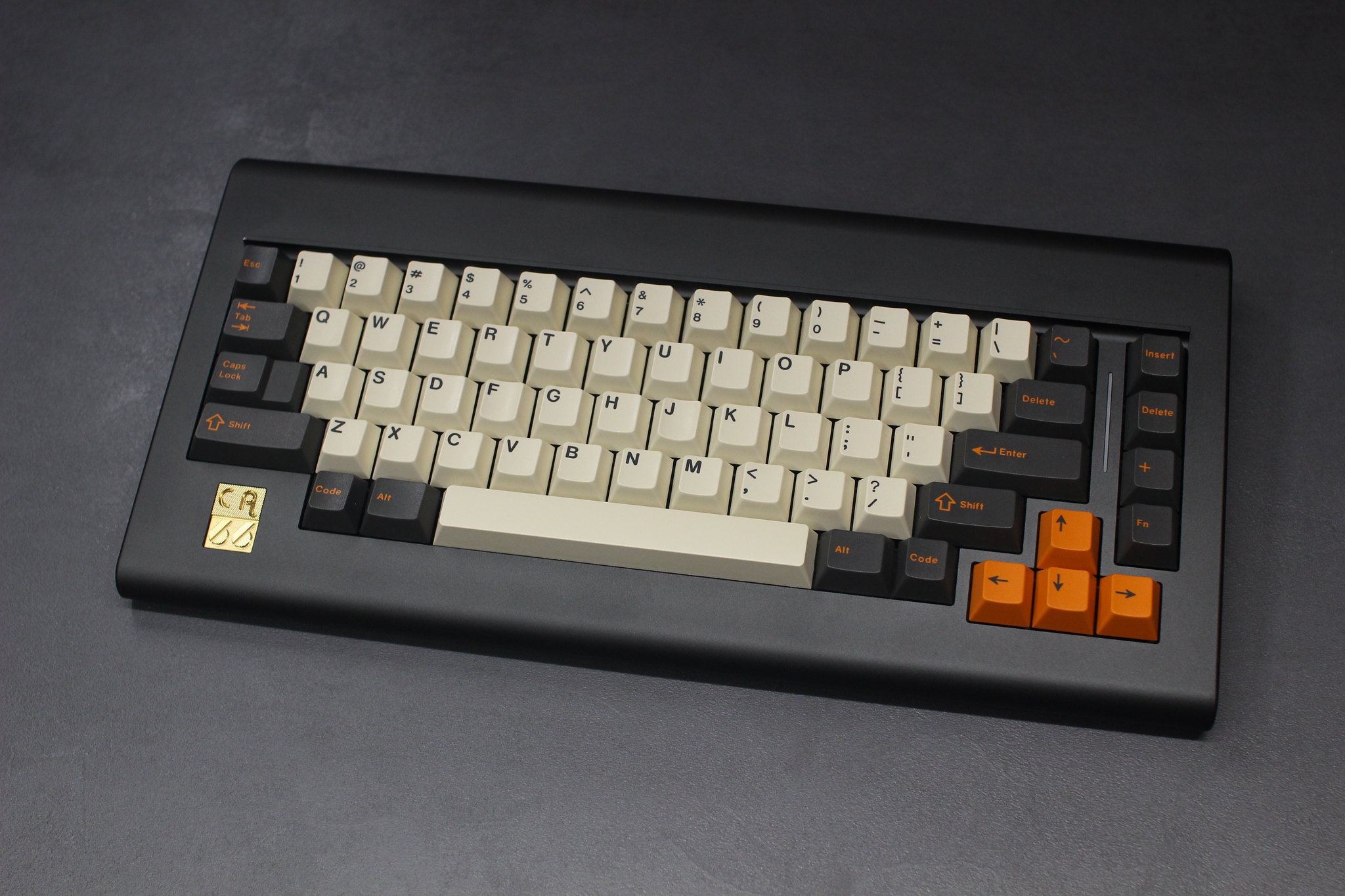Hello fellow geeks.
In this thread i'd like to tell you about my experiment i did recently which had the goal to improve typing feel or at least make it different.
The subject for my experiment is a plate which i made for my CA66 keyboard. Before i introduce you the plate, i'd like to explain the idea.
The IdeaI got already few custom keyboards and most of them are 65% layouts. However compared to TKL Keyboard for example are smaller layouts like 65% stiffer in typing feel. This is actually not a bad thing but lets be honest larger layot keyboard have smoother typing feel. And the reason for this is the flexing of the plate. Sure there are other factors like switches, plate material, etc. Anyway i'd like to point out here particulary the size of the plate, which is crucial for the flexing and the typing feel. To say more precise its about the distance between mounting points. You can compare it to the guitar strings if you like. Short strings are stiffer and provide higher freqency sound where long strings are more flexible and have deeper sound.
So the idea is to increase the distance between the mounting points of the plate with extensions.
The plateFor this experiment i've decided to use CA66 keyboard, because it has plenty of space inside the case, which can be utilized for the plate extensions. PlayKeyboardTW provided me the cad file for the plate and i am very thankfull him for this. Otherwise i hade to recreate the original CA66 plate first and this would take some time.
Anyway let me show you the implementation of those extensions.

As you can see i made those extensions horizontaly in order to save space. To be honest this is not the optimal extension placements, because for optimal result the extension should begin at the mounting points in order to provide balance.
Anyway whole flexing moves are now done by those extensions. Say whole plate with pcb is now able to move up and down. The plate is made of carbon fiber because it does not bend like metal and is stiff enough for such extensions.

The extensions made the plate slightly larger but overall its actually acceptable increase in space. To utilize such plate in a keyboard you have to plan it from the start or provide some space inside the case. For example you cant make such plate for most already existing keyboards due to the missing space.
Now let me show you how flexible those extensions are:
Plate in its usual position

and here you can see how the extensions allow the plate to move down. Tho keep in mind i had to use some force to bend it this way and usually the plate will never go down that low. During the typing, the plate moves probably not more than 500 micrometers.
 Conclusion
ConclusionI've typed this whole topic on my CA66 with this plate and i had not the feel i am typing on a small keyboard. For refernce it has lubed retooled cherries with 50g springs. These are pretty light switches and this is how i like it. Compared to my Canoes (also retooled light cherries) the typing feel much softer, even softer than my tkl keyboard. I could even feel with the pinky how the plate flexes all the time of typing. Tho keep in mind it does not provide mushy feel. The typing feel is just about right. It softens downstroke in a pleasing way. Tray mounted keyboards do feel like typing on a brick or concrete in comparisson to this. Tho as i said there are some things which are not optimal. For example CA66 has almost no space for lower part of plate to move down. I think if it had more space the bottom row would feel much better.
Note: I've tested that plate only with linear switches and its designed for linear switches. How it may affect bumpy switches i dont know but i assume it might lower the bump feel of the switch.
So in the end i am pretty much happy with the result. And i recommend keyboard designers to consider such plate (tho optimized and improved) for their next possible projects.
If you has some questions feel free to ask.
Thanks for reading

SVG File with the plate. CA66platewithextensions.svg
CA66platewithextensions.svg (86.6 kB - downloaded 206 times.)
Keep in mind the plate covers only following layout.
 IMG_6696
IMG_6696 by
T0mb3ry, auf Flickr